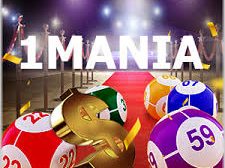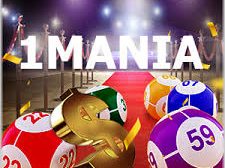In the fast-paced world of plastic, digital gadgets, and flashing lights, there’s something refreshingly simple about wooden toys. They’ve stood the test of time, beloved by children and cherished by parents for generations. But when you combine the enduring charm of wooden toys with the educational philosophy of Montessori, you get something even more special: toys designed not only for fun but also for meaningful learning.
In this blog, we’ll explore the world of Montessori Wooden Toys, why they’re a fantastic choice for young children, and how they support developmental milestones.
What Are Montessori Wooden Toys?
Montessori wooden toys are rooted in the principles of the Montessori method, which was developed by Dr. Maria Montessori in the early 1900s. This educational approach focuses on fostering independence, creativity, and problem-solving through hands-on learning experiences.
The toys in a Montessori classroom—or a Montessori-inspired home—are simple, made from natural materials like wood, and designed to encourage open-ended play. These toys are often gender-neutral and focus on the child’s ability to manipulate them in a variety of ways, allowing children to explore and learn at their own pace.
Why Choose Wooden Toys?
- Durability and Sustainability Wooden toys are known for their durability. Unlike plastic toys that break easily, wooden toys are long-lasting, making them a sustainable choice for families. Many wooden toys can be passed down from child to child, or even generation to generation, reducing the need for frequent purchases.
- Tactile and Sensory Appeal Children love to touch, feel, and explore with their senses. The texture, weight, and warmth of wooden toys provide a sensory experience that plastic toys often lack. This helps children connect with the material world in a more meaningful way, fostering their cognitive and motor skills.
- Encourages Imaginative Play One of the hallmarks of Montessori wooden toys is their simplicity. Without bright colors, sound effects, or pre-determined functions, these toys leave plenty of room for imaginative play. Children can transform a wooden block into a car, a house, or anything their mind can dream up, promoting creativity and independent thinking.
- Non-Toxic and Safe Wooden toys are often made from non-toxic materials and natural dyes, making them safer for babies and toddlers who are still in the phase of putting everything into their mouths. This makes parents feel more at ease when choosing wooden toys for their little ones.
- Connection to Nature Wooden toys help children develop a connection to nature, something that is often missing in today’s technology-driven world. The natural grains, colors, and feel of wood remind children of the world outside their doors, instilling a sense of appreciation for the environment.
How Montessori Wooden Toys Support Learning
Montessori wooden toys are not just playthings—they are tools that promote key developmental skills.
- Fine Motor Skills Toys like wooden puzzles, stacking blocks, and bead stringing sets help develop a child’s fine motor skills. These activities require precision, concentration, and control, all of which are essential for later tasks like writing.
- Cognitive Development Montessori toys are designed to be open-ended, meaning children can engage with them in multiple ways. This encourages problem-solving and critical thinking. For example, a set of wooden building blocks can be used to create different structures, teaching children about balance, gravity, and spatial awareness.
- Promotes Focus and Concentration Because Montessori toys are often simple and free from distractions, they help children focus on the task at hand. This deep concentration is key to helping children complete tasks independently and confidently.
- Learning Through Play Montessori toys are rooted in the idea that children learn best through play. Wooden toys that emphasize sorting, stacking, matching, or cause-and-effect relationships allow children to absorb lessons about math, science, and logic organically.
Choosing the Right Montessori Wooden Toys
When selecting Montessori wooden toys for your child, focus on choosing toys that align with their current developmental stage. Here are a few recommendations:
- Infants (0-12 months): Look for wooden rattles, simple grasping toys, and stacking rings.
- Toddlers (1-3 years): Consider wooden puzzles, shape sorters, and building blocks.
- Preschoolers (3-5 years): Opt for toys that encourage problem-solving, like wooden construction sets, counting beads, or sensory boards.
Final Thoughts
Montessori wooden toys are a fantastic investment in your child’s development. They are timeless, sustainable, and thoughtfully designed to encourage learning, creativity, and independence. By choosing these toys, you’re giving your child not just a plaything, but a tool for growth. Plus, they’re beautiful enough to become part of your home decor!
In a world overflowing with flashy, short-lived gadgets, Montessori wooden toys stand out as a gentle reminder of the value of simplicity and the power of purposeful play. Whether you’re just beginning your Montessori journey or looking to add more educational toys to your home, wooden toys are a delightful and meaningful choice.



